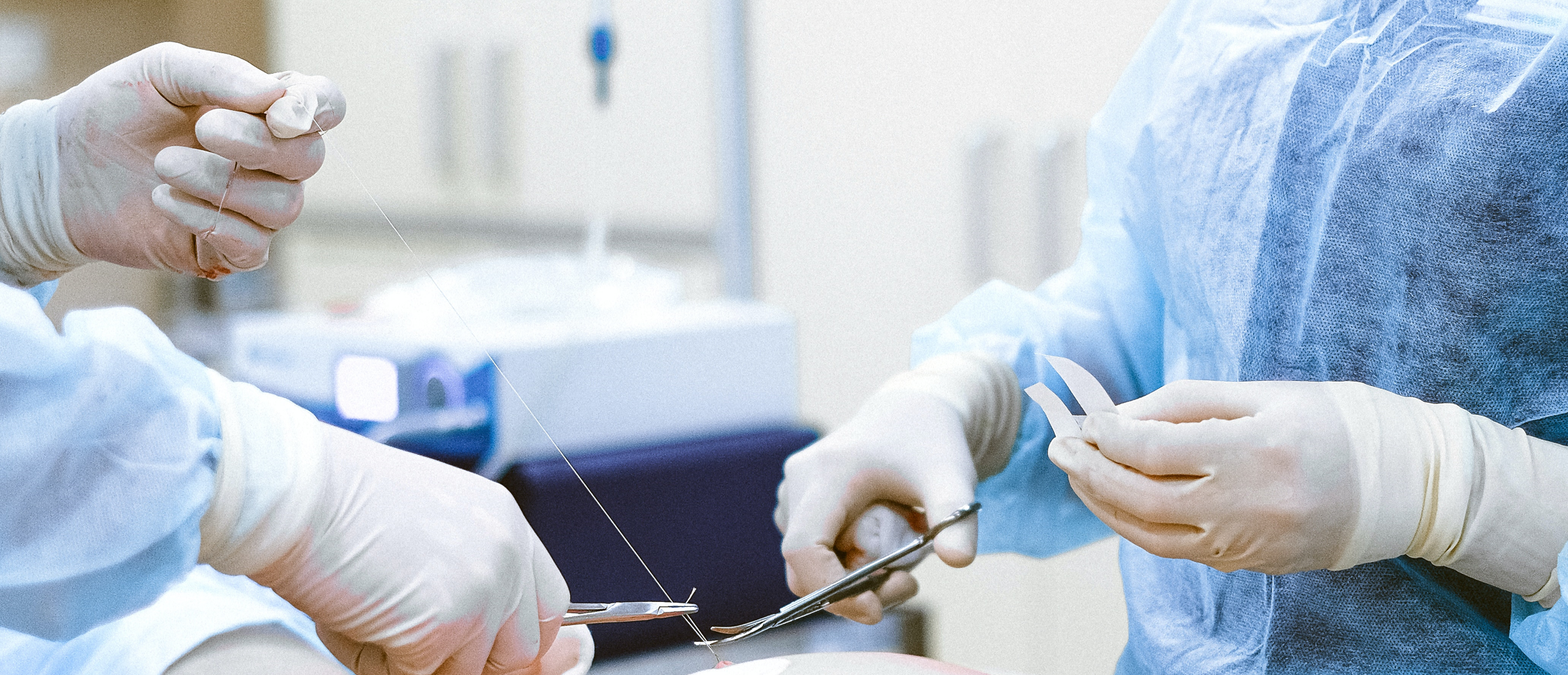General Surgical Instruments: Everything you need to know
Article Summary
General surgical instruments are tools for working on the contents of the abdomen. The term covers dozens of types of instrument, some of which were developed over a century ago. As many of these instruments are reusable, one of the main struggles facing manufacturers today is due to the introduction of the Class Ir classification: part of the new requirements mean that manufacturers must provide data that validates their cleaning, disinfection, and sterilisation instructions.Article Contents
What are General Surgical Instruments?
“General” in this context doesn’t necessarily mean that general surgical instruments are used in all forms of surgery, but instead refers to a surgical specialty that mostly focuses on the contents of the abdomen.
Each of the instruments used in general surgery are designed for a specific purpose. Some instruments were designed well over one hundred years ago, but because they perform their function so well they’re still in use today. Most are named after the surgeon that designed them.
This article briefly highlights many commonly used pieces of equipment, but it is not an exhaustive surgical tools list: there are dozens of tools for all sorts of specialised applications.
MDR Reclassification
Previously, many of the instruments described in this article would have been classified as Class I MDR class. However, under the EU 2017/745 Medical Device Regulation (MDR) many medical devices have now been reclassified to a higher risk class, with a new classification (Class Ir) being introduced for reusable surgical instruments, like the ones mentioned here.
Class Ir medical device manufacturers will need to update their data and documentation (including instructions for reprocessing, described later on in this article), and must also appoint a notified body to audit the reusable aspect of the device. As part of this, the notified body will routinely review evidence to ensure all the general safety and performance requirements are met before the product is placed on the market.
There’s a lot more to the process beyond reprocessing. For more information, see our IFU validation requirements for Class Ir Medical Devices article.

What are the different types of general surgical instruments?
Loosely speaking, there are five different categories of instrument used in general surgery.
- Cutting instruments for creating incisions or removing tissue.
- Grasping instruments for holding or manipulating tissue.
- Haemostatic instruments for stopping bleeding.
- Retracting instruments for keeping underlying tissue or organs exposed.
- Tissue unifying instruments for putting tissue back together.
Instruments of the above categories tend to be made from stainless steel (mostly 400 grade as this is very resistant to wear, but 300 grade is also used), but depending on the environment and use they’re required for, they may be made from titanium, or from alloys using titanium, chromium, vanadium, or molybdenum. These materials tend to be used due to their resistance to corrosion and their hardness.
The Importance of Reprocessing Validation for Reusable Surgical Equipment
Given the environments that general surgical instruments are used in, it’s important that re-usable instruments are safe to be re-used. To ensure that they’re safe, these instruments go through reprocessing: a thorough decontamination process that involves cleaning, disinfection, and sterilisation.
Cleaning is often automated, primarily using washer-disinfectors and ultrasonic cleaners, but some types of equipment require manual cleaning. The purpose of this stage is to remove any solutions or materials remaining on the instrument. Disinfection aims to reduce the number of viable micro-organisms remaining on the instruments. This is most often achieved by washing or rinsing the instruments with high temperature water or using chemical solutions. The final stage of the process is sterilisation, generally using pressurised steam, which kills any remaining micro-organisms.
As mentioned at the beginning of this article, the Medical Devices Regulation (MDR) 2017/745 requires that manufacturers of reprocessable medical equipment provide instructions for the steps mentioned above (Instructions For Use, or IFU) and must also prove that their instructions are effective by having their processes validated.
Test Labs can validate reprocessing IFU using methods based on two international standards (ISO 17664-1 and ISO 17664-2). For more information, visit our Reusable Medical Device Reprocessing page.

General Surgery Tools
- Allis Forceps is a grasping instrument. Allis forceps are ratcheted with sharp-ended jaws, used to hold heavy tissue. They can be damaging, so they’re often used to grasp tissue that needs to be removed.
- Babcock Forceps is a grasping instrument. Babcock forceps are ratcheted with looped, curved jaws, used to hold delicate tissue without damaging it.
- Debakey Forceps is a grasping instrument. Dekabey forceps are not ratcheted and are usually quite large. They are used to manipulate tissue without damaging it.
- Dunhill Forceps is a haemostatic instrument. Dunhill forceps are small, ratcheted, and have curved, textured jaws for better grip. They’re generally used to clamp blood vessels closed.
- Gillies Forceps are a grasping instrument. Gillies forceps are not ratcheted and have narrow, textured jaws for grasping more delicate tissues in small surgical sites.
- Lane Dissecting Forceps are a grasping instrument. Lane dissecting forceps are not ratcheted and usually have textured jaws with teeth at the tip. They are used to grasp tough tissues.
- Lane Tissue Forceps are a grasping instrument. Lane tissue forceps are ratcheted with looped, curved jaws, as well as an interlocking tooth to give them better grip on tough or slippery tissue.
- Langenbeck Retractors are a retracting instrument. Langenbeck retractors have a right-angled end, most often used to separate the edges of an incision but can also be used to hold back tissue and organs.
- Littlewood Forceps are a grasping instrument. Like the Lane tissue forceps, Littlewood forceps are ratcheted and end in interlocking teeth to grip tough or slippery tissue. However, Littlewood forceps have narrower jaws with multiple interlocking teeth.
- Mayo Scissors are a cutting instrument. Mayo scissors have semi-blunt tips are usually used to cut tough tissue. They can be either straight or curved.
- McIndoe Scissors are a cutting instrument. McIndoe scissors have long handles with curved blades and are used for cutting soft tissue.
- Needle Holders is a tissue unifying instrument. Needle holders are ratcheted clamps used to hold suturing needles. Many needle holders have a scissor-like design, but others are more reminiscent of tweezers.
- Norfolk and Norwich Retractors is a retracting instrument. Norfolk and Norwich retractors are jointed and end in a series of curved prongs to help keep deep wounds and incisions open. They are “self-retaining”, thanks to a ratchet system in the handle.
- Rampley Sponge Holders is a grasping instrument. Rampley sponge holders are long and ratcheted, with looped jaws for securely gripping sponges and swabs, although they also be used to hold tissue if needed.
- Sawtell Forceps is a haemostatic instrument. Sawtell forceps are ratcheted with curved, textured jaws, used to clamp shut blood vessels.
- Spencer Wells Forceps is a haemostatic instrument. Spencer Wells forceps are ratcheted with either straight or curved jaws with ridged teeth, used to clamp shut blood vessels.
- Towel Clips is a grasping instrument. Towel clips are ratcheted clamps used to hold drapes in place during surgery, although they also be used to hold tissue if needed. The jaws can be either pointed or end in a ball and socket.
- Travers Retractors is a retracting instrument. Travers retractors are very similar to Norfolk and Norwich retractors, but with shorter prongs. They are used for shallower wounds and incisions.
How Test Labs can help?
If you produce surgeon equipment (whether it’s one of the types listed above or something else entirely) it’s likely that your products need to meet the requirements of the Medical Devices Regulation (MDR) 2017/745, and Test Labs can help. Our comprehensive IFU validation methods include simulated use cycle tests, automated cleaning tests, sterilization process validation, and compatibility assessment testing.
If your equipment requires specialised reprocessing, we also have a breadth of experience in adapting our methods to meet niche requirements.
For more information about our reprocessing validation services visit our Reusable Medical Device Reprocessing page or get in touch.
Get It Done, With Certainty.
Contact us about your testing requirements, we aim to respond the same day.
Get resources & industry updates direct to your inbox
We’ll email you 1-2 times a week at the maximum and never share your information


